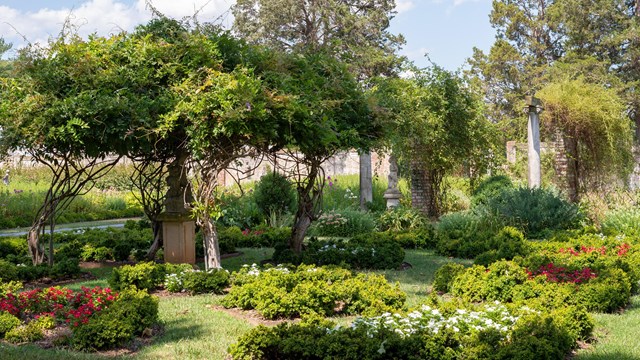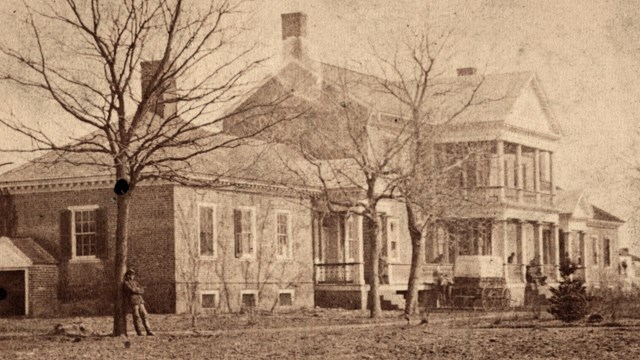About Chatham
Enslaved laborers and craftsmen built Chatham Manor in 1771 at the direction and financing of William Fitzhugh. The large Georgian structure’s location atop Stafford Heights and its visibility from Fredericksburg put the Fitzhughs’ wealth and status on display for everyone around. In addition to owning hundreds of thousands of acres and at least one hundred enslaved people, the Fitzhughs were related to and good friends with other well-known Virginians like George Washington, Thomas Jefferson, and George Mason. The non-stop social requirement of hosting friends and relations drained Fitzhugh's purse. As a result, Fitzhugh sold Chatham 35 years after moving in.
At the time of the Civil War, Confederate supporters Betty and J. Horace Lacy owned Chatham. The Lacys resided at Chatham in the winter and lived in their other home, Ellwood, in the summer. At the outbreak of war, J. Horace Lacy volunteered to serve in the Confederate Army. Betty, meanwhile, packed up the household and left Chatham empty, which allowed it to be occupied by the US Army and used as a headquarters during the Battle of Fredericksburg. After the battle, Chatham’s stately rooms were transformed into a field hospital. Clara Barton, Mary Walker, and Walt Whitman served in the hospital at Chatham, caring for sick and wounded soldiers.
The Lacys returned to Chatham after the war but could not maintain their lavish lifestyle as their wealth had been tied to the enslaved people who had claimed their freedom. Shortly after returning, the Lacy’s sold the house and 1,300 acres. The next eight owners likewise had difficulty keeping up the house and grounds. Chatham’s fortunes changed in 1920, when Helen and Daniel Devore purchased the property. The Devores, in the spirit of Colonial Revivalism, wanted Chatham to represent historic majesty. In the convening years the Devores transformed Chatham from a former slave plantation to a showy, country retreat. The look of Chatham today resembles the house after these restorations in the 1920s.
Chatham Manor has stood along the banks of the Rappahannock River opposite the city of Fredericksburg for 250 years. Chatham’s history reflects the history of the American South. People living and working at Chatham experienced the young nation’s experiment in democracy along with the persistent defense of slavery which nearly destroyed that democracy. War damaged Chatham, only for the grounds to be given new life in the 1900s.



